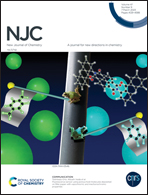Fate of TiO2 nanoparticles in the environment: a review on the transport and retention behavior in the soil compartment
Abstract
Extensive use of TiO2 nanoparticles in a wide range of industrial and household products and processes has increased the probability of their incorporation in the environment as well as the biosphere, which may be hazardous ultimately for human health. Management of this risk will definitely require a firm understanding of the fate and behavior of TiO2 nanoparticles in different compartments of the environment (soil, water, and air) and biosphere. This review article aims to analyze the studies related to the fate and behavior of TiO2 nanoparticles particularly in the soil environment and to provide comprehensive information about the relevant methods performed by researchers during the last few years with the valuable data. After a brief introduction about procedures of lab-level studies carried out so far using different kinds of porous media, effects of different factors present in the immediate vicinity and which affect the fate (i.e., transport and retention) of TiO2 nanoparticles in the soil compartment have been discussed in detail in individual sections. For better understanding, these factors have been considered to be physical, chemical and biological in nature. Furthermore, different theories and mechanisms reported to describe the particle transport in porous media have also been discussed. These mechanisms are based on the fact that the fate of nanoparticles in porous media depends upon homo-aggregation, hetero-aggregation, deposition, straining and transport in unsaturated soils as well as interactions with the other commonly observed organic substances in soil. It was noted that the ultimate theory which could be used to predict the mechanism is the Derjaguin–Landau–Verwey–Overbeek (DLVO) theory, which describes the effect of the electrostatic energy barrier on the rate of transport of particles. It has been concluded that the study of the effects of the above factors on the behavior of TiO2 nanoparticles can be helpful in risk assessment by providing vital knowledge pertaining to a better understanding of the fate and behavior of nanoparticles in a complex environment.

- This article is part of the themed collection: 2023 Focus and Perspective articles


 Please wait while we load your content...
Please wait while we load your content...